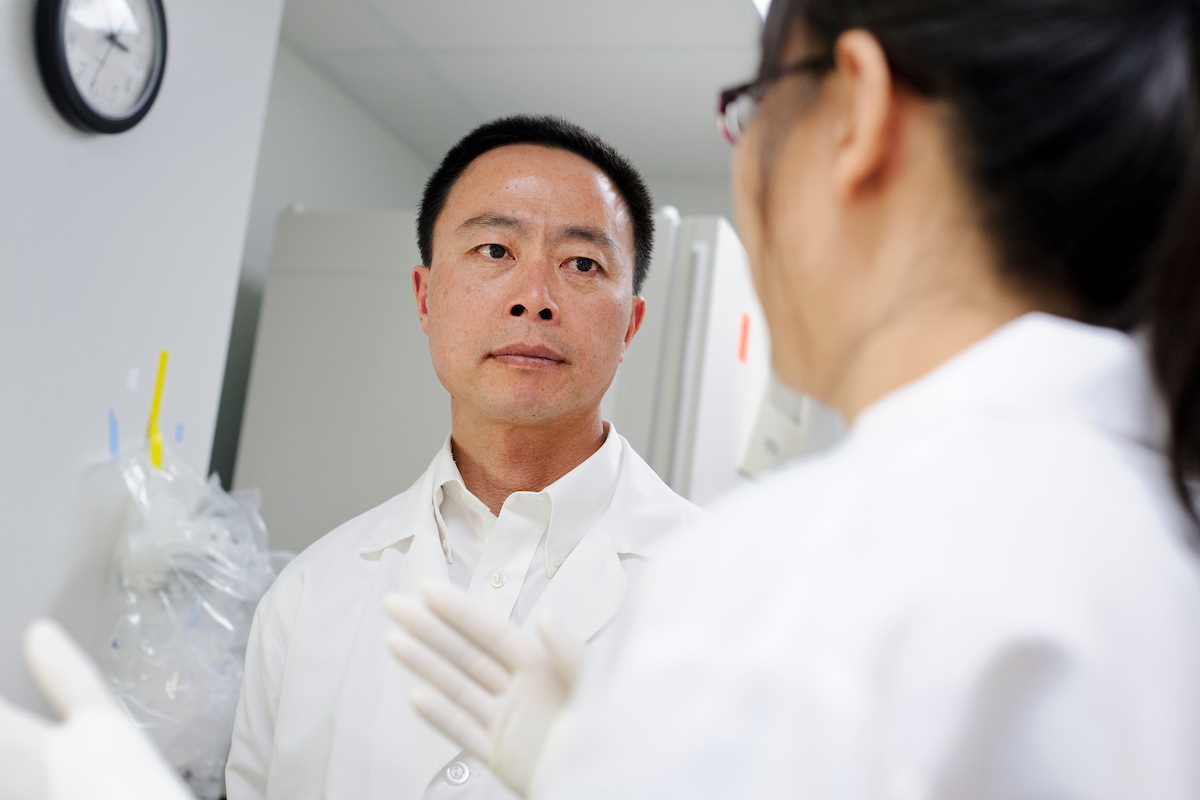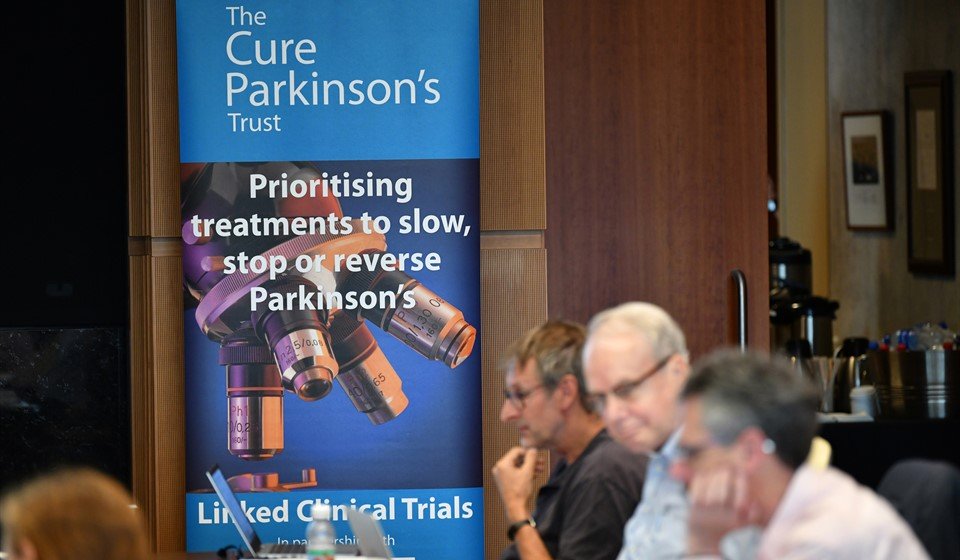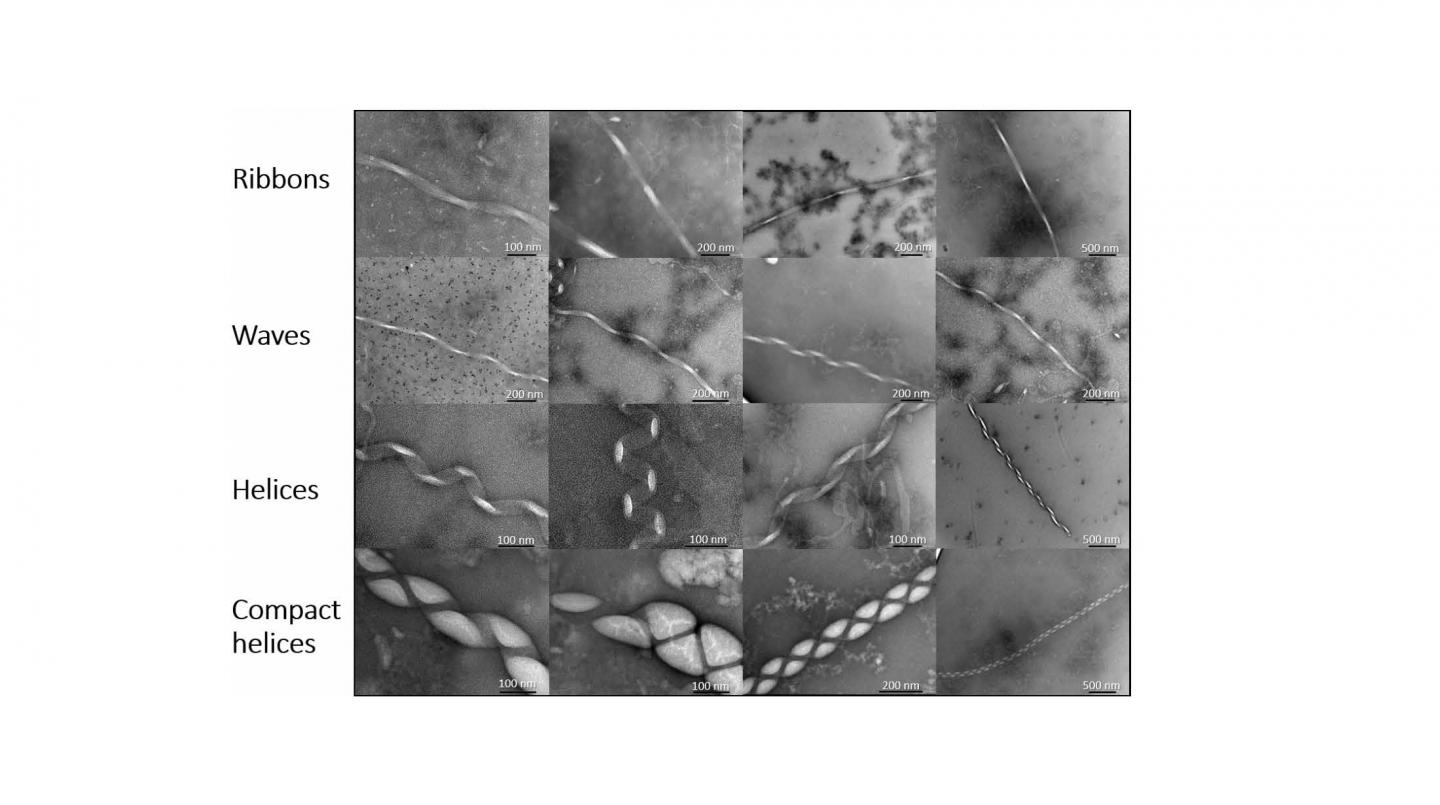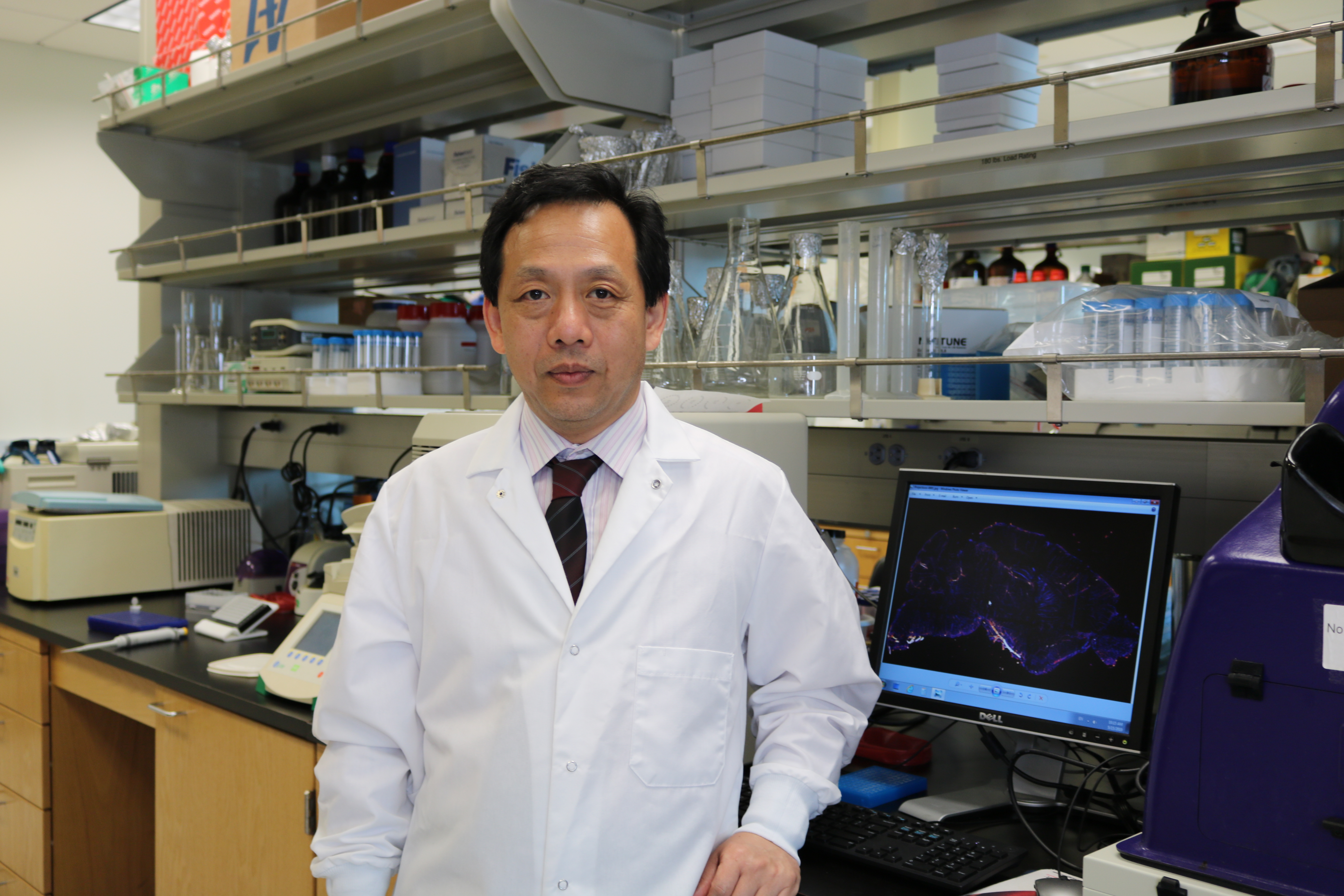MINNEAPOLIS – Even for people with a gene mutation tied to Parkinson’s disease, coffee consumption may be associated with a lower risk of actually developing the disease, according to a new study published in the September 30, 2020, online issue…
Tag: Parkinson’s Disease

Finding Right Drug Balance for Parkinson’s Patients
Parkinson’s disease is most commonly treated with levodopa, but the benefits wear off as the disease progresses and high doses can result in dyskinesia, which are involuntary and uncontrollable movements. To better understand the underlying reasons behind these effects, researchers created a model of the interactions between levodopa, dopamine, and the basal ganglia, an area of the brain that plays a crucial role in Parkinson’s disease. They discuss their findings in the journal Chaos.
Why do structural differences in α-synuclein aggregates cause different pathologies?
Misfolding and aggregation of normally soluble proteins are common pathological features of many neurodegenerative diseases, including Alzheimer’s, Parkinson’s, Creutzfeldt-Jacob and Huntington’s diseases. For example, Parkinson’s disease (PD), dementia with Lewy bodies (DLB) and multiple system atrophy (MSA) are characterized by…
Finding right drug balance for Parkinson’s patients
As Parkinson’s disease progresses, more levodopa is required to treat it. Too much, however, can lead to uncontrollable, involuntary bodily movements

Spinal Cord Stimulation Reduces Pain and Motor Symptoms in Parkinson’s Disease Patients
A team of researchers in the United States and Japan reports that spinal cord stimulation (SCS) measurably decreased pain and reduced motor symptoms of Parkinson’s disease, both as a singular therapy and as a “salvage therapy” after deep brain stimulation (DBS) therapies were ineffective.
Spinal cord stimulation reduces pain and motor symptoms in Parkinson’s disease patients
In study, 15 patients with long-term PD and chronic pain and mobility impairment showed improvements across multiple measures

2020 Tom Isaacs Award honors leading Parkinson’s expert
GRAND RAPIDS, Mich. (Sept. 25, 2020) — Van Andel Institute and The Cure Parkinson’s Trust are thrilled to announce Caroline Tanner, M.D., Ph.D., of University of California, San Francisco’s Weill Institute for Neurosciences as the recipient of the 2020 Tom Isaacs Award, which honors individuals who have had a significant impact on the lives of people with Parkinson’s and/or involved them in a participatory way in research.

Stem cells can repair Parkinson’s-damaged circuits in mouse brains
University of Wisconsin–Madison researchers demonstrated a proof-of-concept stem cell treatment in a mouse model of Parkinson’s disease. They found that neurons derived from stem cells can integrate well into the correct regions of the brain, connect with native neurons and restore motor functions.
Stem cells can repair Parkinson’s-damaged circuits in mouse brains
MADISON, Wis. — The mature brain is infamously bad at repairing itself following damage like that caused by trauma or strokes, or from degenerative diseases like Parkinson’s. Stem cells, which are endlessly adaptable, have offered the promise of better neural…
Decreased protein degradation in cerebellum leads to motor dysfunction
Progress in overcoming spinocerebellar ataxia, an intractable genetic disease
Persons with Parkinson’s disease can have a brighter future
In this supplement to the Journal of Parkinson’s disease experts review management strategies that can help improve quality of life of patients living with Parkinson’s disease and highlight the importance of personalized, optimal care management
Neurological consequences of COVID-19: The ‘Silent Wave’
MELBOURNE, Australia, September 22, 2020 – Is the world prepared a wave of neurological consequences that may be on its way as a result of COVID-19? This question is at the forefront of research underway at the Florey Institute of…

International Linked Clinical Trials strategic funding for Parkinson’s now worth US$6.75 million
LONDON (Sept. 21, 2020) — The Cure Parkinson’s Trust (CPT) and Van Andel Institute (VAI) are delighted to welcome a third strategic funding partner, The John Black Charitable Foundation (JBCF), to the International Linked Clinical Trials (iLCT) program. Together, these three partners have pledged a total of US$6.75 million to Parkinson’s research over three years.
University of Minnesota, Van Andel Institute earn $6M to study aging’s role in Parkinson’s
GRAND RAPIDS, Mich. (Sept. 21, 2020) — A collaborative team between the University of Minnesota Medical School and Van Andel Institute (VAI) will soon begin a $6.2 million study that seeks to define the molecular linkages between aging and Parkinson’s disease — an approach for new treatment targets not yet explored by many researchers. The group recently earned a three-year grant from the Aligning Science Across Parkinson’s initiative, an international collaborative research effort partnering with The Michael J. Fox Foundation for Parkinson’s Research to implement its funding.
The impact of COVID-19 on access to Parkinson’s disease medication
A global survey of health professionals has shown that during the COVID-19 pandemic, patients with Parkinson’s disease in large parts of Asia, Africa, and Latin and South America experienced difficulty in accessing their medication
International linked clinical trials strategic funding for Parkinson’s now worth $6.75M
LONDON (Sept. 21, 2020) — The Cure Parkinson’s Trust (CPT) and Van Andel Institute (VAI) are delighted to welcome a third strategic funding partner, The John Black Charitable Foundation (JBCF), to the International Linked Clinical Trials (iLCT) program. Together, these…
Human Brain Project launches ‘Brain Matters’ webinar series
The hour-long sessions will focus on different areas of brain research and feature expert speakers, with the goal of highlighting the HBP’s scientific achievements and the state-of-the-art services offered by its new infrastructure for brain research, EBRAINS. The first event,…

Scientists to Explore New Frontiers in Parkinson’s Disease Research with $7.2M Grant
Aligning Science Across Parkinson’s has announced a three-year, $7.2 million grant to scientists at UC San Diego and Germany to support research on LRKK2, a gene linked to Parkinson’s disease. The new funding expands efforts using cryo-EM technology to produce previously unseen views of LRKK2.
New Smart Drug Delivery System May Help Treatment for Neurological Disorders
Drug delivery technology is aimed at helping people with spinal cord and other nervous system disorders
Scientists to explore new frontiers in Parkinson’s disease research with $7.2M grant
Aligning science across Parkinson’s initiative supports international project aiming to unravel the biology of a gene linked to Parkinson’s disease
Singapore start-up plans clinical trial of a single daily pill for Parkinson’s disease
Materials scientists from Nanyang Technological University, Singapore (NTU Singapore) have developed a new pill which uses the stomach as a drug reservoir and delivers medicines slowly over time to patients with Parkinson’s disease (PD). Parkinson’s disease is a neuro-degenerative disorder…
Could monitoring blood pressure help reduce falls for people with Parkinson’s?
MINNEAPOLIS – People with Parkinson’s disease are more likely than people of a similar age without the disease to have a sudden drop in blood pressure upon standing, a phenomenon called orthostatic hypotension, according to a new study published in…

LJI scientists receive $3.5 million to investigate role of immune cells in Parkinson’s disease
Scientists at the La Jolla Institute for Immunology (LJI) have received $3.5 million as part of a team award from Aligning Science Across Parkinson’s (ASAP) to support a three-year study into how immune cells may contribute to Parkinson’s disease.
Parkinson’s patient skin samples provide clues to disease mechanism and clinical test
In a recently published study, researchers from the Turku Bioscience Centre at the University of Turku and Åbo Akademi University in Finland monitored the production of new proteins as they were produced by the cells’ protein building machinery, the ribosome.…
Exercise protocol mitigates one of the most incapacitating symptoms of Parkinson’s disease
Brazilian researchers use complex training program to stimulate different motor and cognitive skills simultaneously and restore brain regions associated with freezing of gait in advanced-stage patients
Stem cell research delivers new points of attack against Parkinson’s disease
In a seven-year research effort, an international team of scientists has clarified the cause for certain genetic forms of Parkinson’s disease, and has identified potential pharmacological treatments
Creating diamond devices to detect Parkinson’s early
Engineers from Michigan State University have secured $3.4 million in grants to develop diamond implants that could let doctors diagnose and treat Parkinson’s disease earlier. MSU’s Wen Li and Erin Purcell are leading the effort to use innovative diamond devices…
Concussion discovery reveals dire, unknown effect of even mild brain injuries
UVA researchers have discovered that concussions and traumatic brain injuries, even when mild, cause swelling that blocks the brain’s ability to clean itself of harmful toxins and debris. In addition to an immediate impact on memory and brain inflammation, this…
Levodopa may improve vision in patients with macular degeneration
The widely used and well-tolerated drug commonly used to treat Parkinson’s disease may help significantly reduce the need for more costly, more invasive treatments, report investigators in The American Journal of Medicine
Brain’s immune cells promising cellular target for therapeutics
Microglia brain cells can be targeted with nanomedicines to tamp down uncontrolled inflammation activation, which causes neurodegenerative diseases

Research News Tip Sheet: Story Ideas from Johns Hopkins Medicine
During the COVID-19 pandemic, Johns Hopkins Medicine Media Relations is focused on disseminating current, accurate and useful information to the public via the media. As part of that effort, we are distributing our “COVID-19 Tip Sheet: Story Ideas from Johns Hopkins” every other Tuesday.
Cellular energy audit reveals energy producers and consumers
A team at Gladstone Institutes screened the human genome for genes that play a role in making or consuming cellular energy
Breakthrough in using stem cells to treat enteric nervous system disorders
Scientists have made a breakthrough in understanding how the enteric nervous system forms, which could pave the way for new treatments for neurodegenerative diseases such as Parkinson’s. The findings, published in the journal Stem Cell Reports , pave the way…

Unique protein structures could hold the key to treatment for Parkinson’s disease
Scientists at the University Bath in the UK have discovered a series of protein structures that are thought to be highly relevant to the onset of Parkinson’s disease.
Unique protein structures could hold the key to treatment for Parkinson’s disease
Scientists from the University of Bath in the UK have discovered a series of protein structures that are thought to be highly relevant to the onset of Parkinson’s disease.
Can a Healthy Diet Reduce Risk of Parkinson’s?
While movement problems are the main symptoms of Parkinson’s disease, people with the disease often have non-motor symptoms such as constipation, daytime sleepiness and depression 10 or more years before the movement problems start. A new study suggests that eating a healthy diet in middle age may be linked to having fewer of these preceding symptoms. The study is published in the August 19, 2020, online issue of Neurology®, the medical journal of the American Academy of Neurology.
Can a healthy diet reduce risk of Parkinson’s?
Eating veggies, nuts linked to fewer symptoms that may precede the disease
CZI awards $4.5M to advance innovative approaches to fighting neurodegenerative diseases
Grants support pairs of researchers to collaborate and unlock the underlying biology of neurodegenerative disorders
Leading-edge technology unmasks protein linked to Parkinson’s disease
Two cryo-EM studies pave the way for possible drugs to treat neurodegenerative disorder affecting millions
Using personal frequency to control brain activity
Stroke, Parkinson’s disease and depression – these medical illnesses have one thing in common: they are caused by changes in brain functions. For a long time, research has therefore been conducted into ways of influencing individual brain functions without surgery…
Switching off ‘master regulator’ may shield the brain from Parkinson’s-related damage
GRAND RAPIDS, Mich. (August 17, 2020) — Switching off a molecular “master regulator” may protect the brain from inflammatory damage and neurodegeneration in Parkinson’s disease, reports a study published today in Nature Neuroscience . The study is the first of…
FEFU scientists propose to restore neural tissue with hydrogels based on modified pectins
Far Eastern Federal University (FEFU) scientists have developed implantable hydrogels based on plant polysaccharides (pectins). They can play the role of an artificial extracellular matrix, a special network of molecules that fills the space between body cells. The development to…
NIH grant to help fast-track Neurodon’s Alzheimer’s drug development research
WEST LAFAYETTE, Ind. – A $2 million grant from the National Institute on Aging at the National Institutes of Health to Neurodon, a Purdue University-affiliated startup, will help fast-track molecules that could improve memory and reduce Alzheimer’s disease neurodegeneration. The…
Discovery shows promise for treating Huntington’s Disease
Scientists at EPFL’s Brain Mind Institute have identified an enzyme that can play a central role in developing a new route of treatment for Huntington’s Disease.

New Study on Development of Parkinson’s Disease is ‘On the Nose’
Scientists suggest that the initial impact of environmental toxins inhaled through the nose may induce inflammation in the brain, triggering the production of Lewy bodies that can then be spread to other brain regions. However, the relationship linking olfactory dysfunction and Parkinson’s disease development remains unclear. New findings from a study add weight to this theory and identify a critical signaling molecule that may be key to the domino effect kicked off by nasal inflammation.
New study on development of Parkinson’s disease is ‘on the nose’
FAU neuroscientist and collaborators link inflammation, olfaction and pathology seen in Parkinson’s disease
The outlook is encouraging: Researchers evaluate a pipeline of clinical trials
A research team, including Parkinson’s community patients and carers, has identified and analyzed 145 registered clinical trials
Diverse amyloid structures and dynamics revealed by high-speed atomic force microscopy
In the human body, proteins sometimes occur in fibrillar aggregates called amyloids. Although certain amyloids are known to have a biological function, amyloid formation is often associated with pathologies, including Alzheimer’s and Parkinson’s diseases. Understanding how exactly amyloid fibrils form…
GlycoNet invests $3.9 million to address research gaps in Canadian healthcare
Eleven funded projects aim to mitigate the impact of healthcare burden in Canada and contribute to better understanding of several challenging diseases
Journal of Parkinson’s Disease awards first Parkinson Prizes
Recipients are Thomas Foltynie, MD, PhD, Heiko Braak, MD, and Kelly Del Tredici, MD, PhD, for their outstanding contributions to Parkinson’s disease research